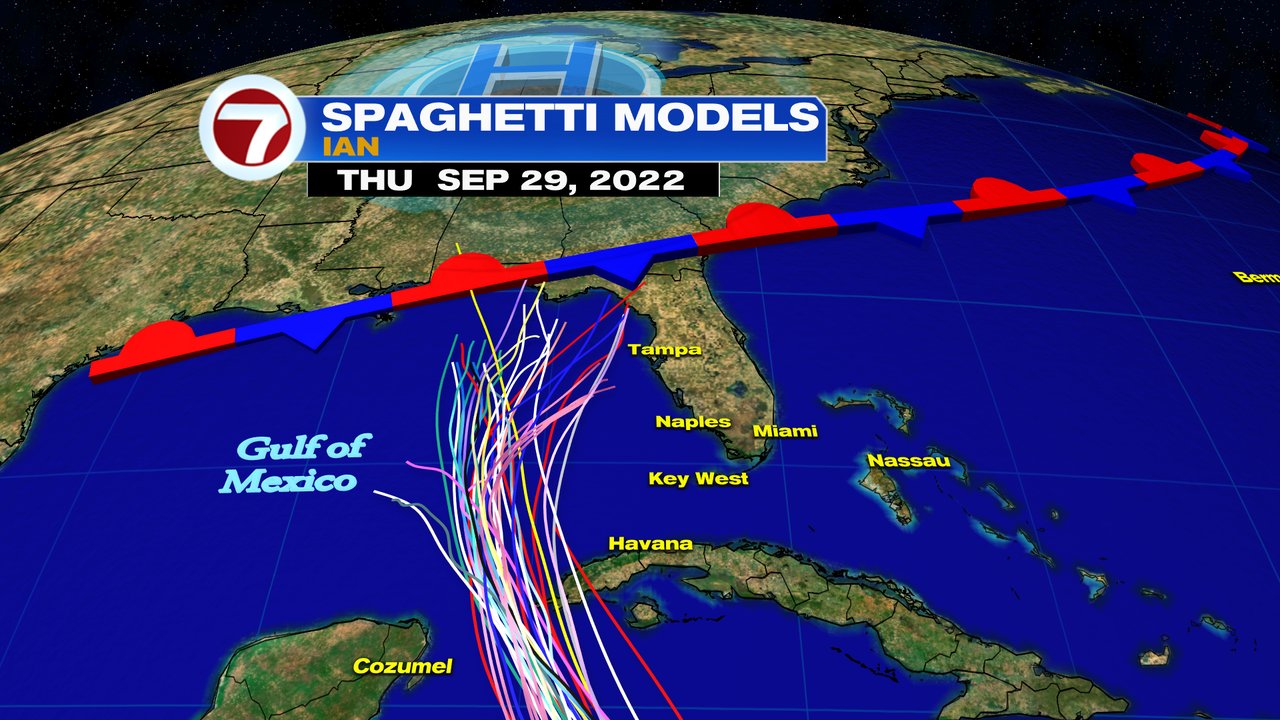Spaghetti Model Overview: Spaghetti Models

Spaghetti models are a type of probabilistic forecasting model that uses a large number of simulations to predict future outcomes. They are often used in situations where there is a high degree of uncertainty, and where it is difficult to predict the future with any certainty. Spaghetti models get their name from the fact that they produce a large number of spaghetti-like lines, each of which represents a possible future outcome.
Spaghetti models are a type of climate model that is used to predict the future climate. Spaghetti models beryl are a specific type of spaghetti model that is used to predict the future climate of the Atlantic Ocean. Spaghetti models beryl are used to help scientists understand how the Atlantic Ocean will change in the future, and how this will affect the climate of the rest of the world.
Spaghetti models are an important tool for climate scientists, and spaghetti models beryl are a specific type of spaghetti model that is used to predict the future climate of the Atlantic Ocean.
Spaghetti models are used in a wide variety of industries, including finance, weather forecasting, and public health. In finance, spaghetti models are used to predict future stock prices and interest rates. In weather forecasting, spaghetti models are used to predict future weather patterns. In public health, spaghetti models are used to predict the spread of infectious diseases.
Spaghetti models show possible paths of a storm. They’re like spaghetti strands, all tangled up. Want to know if Beryl will hit Florida? Check out the latest spaghetti models here. They’ll give you an idea of where the storm might go.
Advantages of Spaghetti Models
- Spaghetti models can be used to predict future outcomes in situations where there is a high degree of uncertainty.
- Spaghetti models are relatively easy to use and understand.
- Spaghetti models can be used to generate a wide range of possible future outcomes.
Disadvantages of Spaghetti Models
- Spaghetti models can be computationally expensive to run.
- Spaghetti models can be difficult to interpret.
- Spaghetti models can be sensitive to the choice of input parameters.
Spaghetti Model Applications

Spaghetti models have proven their worth in various domains, offering valuable insights for decision-making. Let’s explore some notable success stories and the industries where they excel.
In the financial sector, spaghetti models have been instrumental in predicting market trends. For instance, the spaghetti model developed by the Bank of England successfully anticipated the 2008 financial crisis, providing valuable early warnings.
Industries Where Spaghetti Models Excel
Spaghetti models are particularly effective in industries characterized by:
- Complex systems with numerous interconnected variables
- High levels of uncertainty and volatility
- A need for long-term forecasting and scenario planning
Some notable industries where spaghetti models have been successfully applied include:
- Finance
- Economics
- Climate science
- Healthcare
- Supply chain management
Challenges and Opportunities, Spaghetti models
While spaghetti models offer significant potential, they also come with challenges and opportunities:
- Challenges:
- Data availability and quality
- Model complexity and computational requirements
- Interpreting and communicating results
- Opportunities:
- Advancements in computing power and data science techniques
- Collaboration between domain experts and modelers
- Improved understanding of complex systems and decision-making
Spaghetti Model Enhancements

The field of spaghetti modeling is constantly evolving, and there are always new techniques being developed to improve the accuracy and efficiency of these models. Some of the most promising enhancements include:
- The use of machine learning and artificial intelligence (AI) to automate the process of model development and deployment.
- The development of new data visualization techniques that make it easier to understand and interpret spaghetti models.
- The adoption of best practices in spaghetti model development and deployment.
Role of Data Visualization in Enhancing Spaghetti Models
Data visualization is an essential tool for understanding and interpreting spaghetti models. By visualizing the data, it is possible to identify patterns and trends that would be difficult to see otherwise. This can help to improve the accuracy and efficiency of spaghetti models.
There are a number of different data visualization techniques that can be used to enhance spaghetti models. Some of the most common techniques include:
- Line charts
- Bar charts
- Scatter plots
- Heat maps
- 3D visualizations
The choice of which data visualization technique to use will depend on the specific spaghetti model and the data that is being visualized. However, all of these techniques can be effective in helping to improve the understanding and interpretation of spaghetti models.
Best Practices in Spaghetti Model Development and Deployment
There are a number of best practices that can be followed to improve the development and deployment of spaghetti models. Some of the most important best practices include:
- Using a structured and iterative approach to model development.
- Validating and testing spaghetti models before they are deployed.
- Documenting spaghetti models and their development process.
- Monitoring spaghetti models after they are deployed.
By following these best practices, it is possible to improve the accuracy, efficiency, and reliability of spaghetti models.